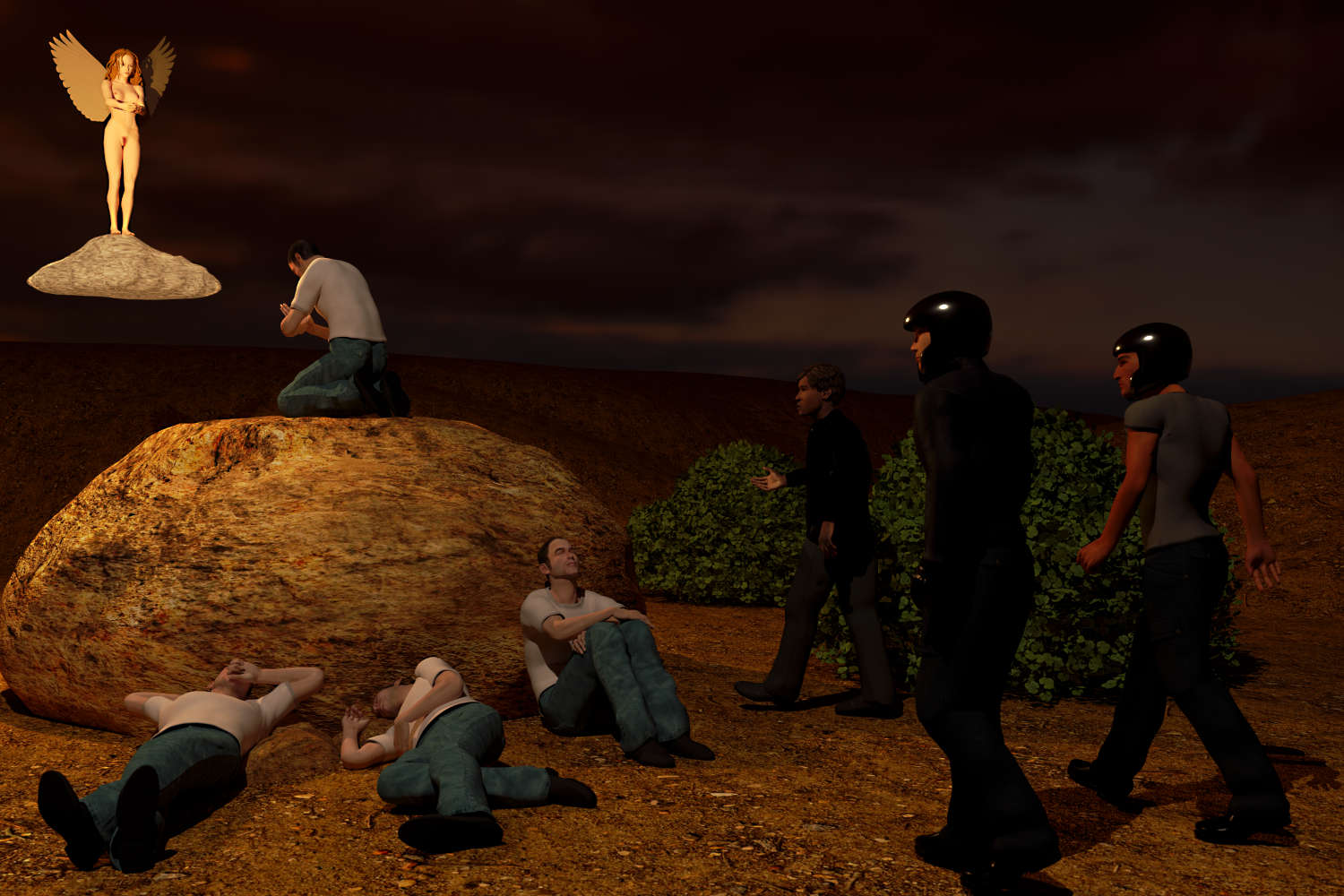
Agony in the Garden
2014
Inkjet on watercolour paper
90 x 60 centimeters
Throughout the history of western art, The Agony in the Garden, the event where Christ pondered his fate and his betrayal by Judas has been covered by many artists. The rich cast of characters in a dramatic setting has provided artists with a lot of material for interpretation and I'll go through the choices I made for my update on the subject.
The first decision I made for this reimagining was deciding how the scene should be lit. The event has a sombre fatalistic tone, hence the ambient nocturnal gloom broken by an unearthly light emanating from the hovering angel. It serves to highlight Jesus and the disciples in their white tee shirts and endow the Romans emerging from the shadows in their dark clothes with a sense of menace.
I don't know if there's a theological reason why Renaissance artists traditionally favoured naked cherubs for the representation of the angel but nowadays this would be a problematic choice. Portraying the angel as a naked female figure would also meet with disapproval in some quarters and those objecters aren't necessarily devout Christians. Some scholars believe that angels came in a cryptoid form which would've been a fascinating exploration if I had been aware of that research at the time.
I decided to dress Jesus and the disciples uniformly for several reasons. Compositional simplicity is the main reason that also had the benefit of saving a lot of work because it required only one figure which was copied and configured into various poses. It's also worth noting that research into early Christianity led to some bible scholars to conclude it had a cult like organisation and this chimes nicely with the uniformity of this group of figures.
It would have made sense to portray the Romans as military figures and this would have presented a narrative logic and well as a compositional logic. Instead I opted for a biker/goon squad depiction because such groups have a psychological creepiness plus their presence raises the philosophic questions about the legitimacy and coercive power of the state.
Agony in the Garden, Giovanni Bellini : National Gallery, London
Agony in the Garden, William Blake : Tate Gallery, Britain
Agony in the Garden, Andrea Mantegna : National Gallery, London
Agony in the Garden, El Greco : Toledo Art Museum
Christ in the Garden of Olives : Norton Museum